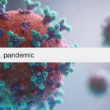
In the United States, depression remains a pressing public health concern, with major depressive episodes affecting millions of adults each year. As we navigate the complexities of mental disorders, the emphasis on health promotion and disease prevention for depression has never been more critical. This article explores comprehensive strategies and interventions aimed at mitigating the impact of depressive disorders, underscoring the importance of a proactive approach to mental health prevention and control.
Understanding Depression: A Public Health Perspective
Depression, a common but serious mental disorder, encompasses various forms, including major depressive disorder and postpartum depression, among others. Characterized by persistent sadness, lack of interest in activities, and an array of physical and emotional problems, depression significantly impairs daily functioning. Despite its prevalence, misconceptions and stigma surrounding mental health often hinder effective treatment and prevention.
The Role of Health Promotion and Disease Prevention
Mental Health Promotion: Empowering Individuals and Communities
Mental health promotion aims to improve psychological well-being through various programs and initiatives. By focusing on enhancing resilience, emotional intelligence, and social support, health promotion interventions can effectively increase awareness and reduce the incidence of depressive episodes. Strategies include educational campaigns, community-based workshops, and online resources that encourage healthy lifestyle choices and stress management techniques.
Disease Prevention: Preventive Psychiatry and Early Intervention
Disease prevention in the context of depression involves identifying risk factors and implementing preventive psychiatry measures. Screening for depressive symptoms among high-risk groups, such as adults undergoing major life transitions or experiencing chronic disease, is crucial. Preventive interventions, including cognitive-behavioral therapy (CBT) and physical activity programs, have shown promise in reducing the severity and frequency of depressive episodes.
Key Strategies for Depression Prevention
Integrating Physical and Mental Health
The interconnection between physical and mental health cannot be overstated. Regular physical activity, a balanced diet, and sufficient sleep play pivotal roles in preventing depression. Chronic disease prevention strategies that address physical health conditions, such as diabetes and heart disease, can also mitigate the risk of developing depressive disorders.
Enhancing Access to Mental Health Care
Improving access to mental health services is essential for early detection and treatment of depression. Telepsychiatry and mobile health apps have emerged as valuable tools in bridging the gap, offering remote counseling and support. Additionally, training primary care providers in the identification and management of depression can facilitate timely intervention.
Community-Based Programs and Support
Community-based programs offer a platform for peer support and engagement, crucial for individuals experiencing depression. These programs, often in collaboration with the National Center for Disease Control and Prevention, provide resources and activities that promote social connection and emotional well-being.
Education and Awareness Campaigns
Raising awareness about depression and its impact on overall health is fundamental. Campaigns aimed at debunking myths and reducing stigma associated with mental disorders encourage people to seek help. Initiatives like Healthy People 2030 highlight mental health promotion and disease prevention as national priorities, setting actionable objectives to improve mental health outcomes.
The Importance of Preventive Psychiatry
Preventive psychiatry emphasizes the early detection and intervention of mental health issues before they escalate. By integrating preventive measures into primary care and community settings, the likelihood of developing severe depressive disorders can be significantly reduced. This approach aligns with the goals of health promotion prevention, focusing on resilience-building and coping strategies.
Leveraging Technology for Mental Health
Digital Mental Health Interventions
Digital interventions offer innovative ways to address mental health challenges, providing scalable and accessible solutions. Through apps and web-based platforms, individuals can access therapeutic tools, such as cognitive-behavioral therapy (CBT) exercises, mindfulness practices, and mood tracking. These technologies facilitate early detection of depressive symptoms and provide immediate, personalized support, potentially reducing barriers to treatment such as stigma and accessibility issues.
Online Communities and Support Networks
The internet has revolutionized social connectivity, enabling the formation of online communities that offer support for individuals facing depression. These platforms allow people to share their experiences, receive advice, and feel less isolated. Importantly, they can be particularly beneficial for individuals who may not have access to traditional support systems or who prefer anonymity when discussing their mental health.
Policy and Public Health Initiatives
Mental Health Policies and Legislation
Effective mental health policies and legislation are crucial for ensuring that individuals have access to the necessary care and support. This includes funding for mental health services, ensuring insurance coverage for mental health treatment, and implementing programs aimed at depression prevention. Policies that prioritize mental health also help to reduce stigma and make it easier for people to seek help without fear of discrimination.
Public Health Campaigns and Initiatives
Public health campaigns play a pivotal role in raising awareness about depression, promoting early detection, and encouraging individuals to seek help. Initiatives like Healthy People 2030 in the United States set clear objectives to improve mental health outcomes and reduce the suicide rate. These campaigns often use various media platforms to reach a wide audience, emphasizing the importance of mental health and the availability of resources and support.
Educational Programs and Workplace Wellness
School-Based Mental Health Education
Integrating mental health education into school curricula can significantly impact young people’s understanding and attitudes towards mental health. By educating students about depression and other mental health issues, schools can promote early recognition of symptoms, reduce stigma, and encourage supportive peer environments. These programs can also equip students with coping mechanisms and stress management techniques, fostering resilience from a young age.
Workplace Mental Health Programs
Workplace wellness programs that include mental health components are essential for promoting a healthy work environment. By offering resources such as employee assistance programs (EAPs), stress management training, and flexible work arrangements, employers can help mitigate the risk of depression among employees. Furthermore, fostering a workplace culture that values mental health can encourage employees to seek help when needed and support their colleagues, ultimately improving productivity and job satisfaction.
Conclusion
Depression remains a formidable challenge, affecting millions of individuals and their families. However, through targeted health promotion and disease prevention strategies, including mental health interventions and programs, we can combat the prevalence of this disorder. Emphasizing preventive psychiatry, community support, and integrated care models, alongside national initiatives like Healthy People 2030, will propel us toward a future where mental well-being is accessible and prioritized for all.
The collaborative effort between the Centers for Disease Control and Prevention, mental health professionals, and the community at large is imperative in advancing the agenda of depression prevention. By fostering an environment that supports mental health promotion, prevention, and early intervention, we can significantly decrease the burden of depression and enhance the quality of life for individuals across the nation.



